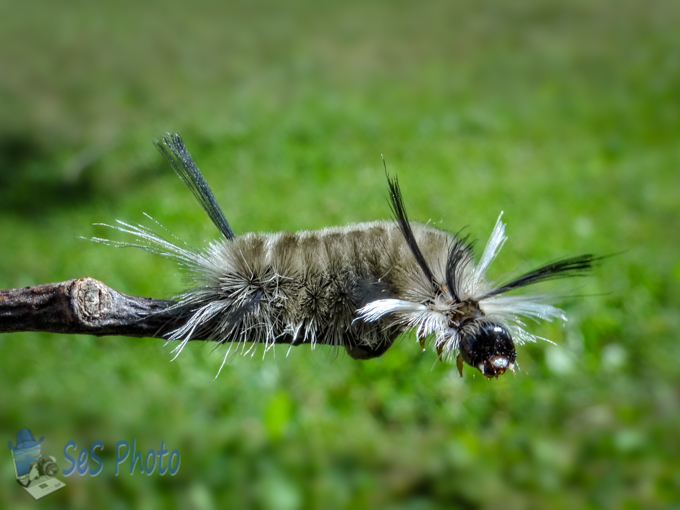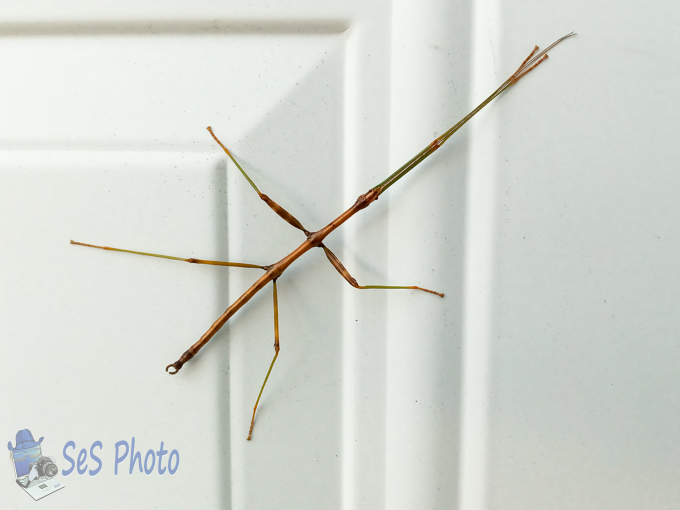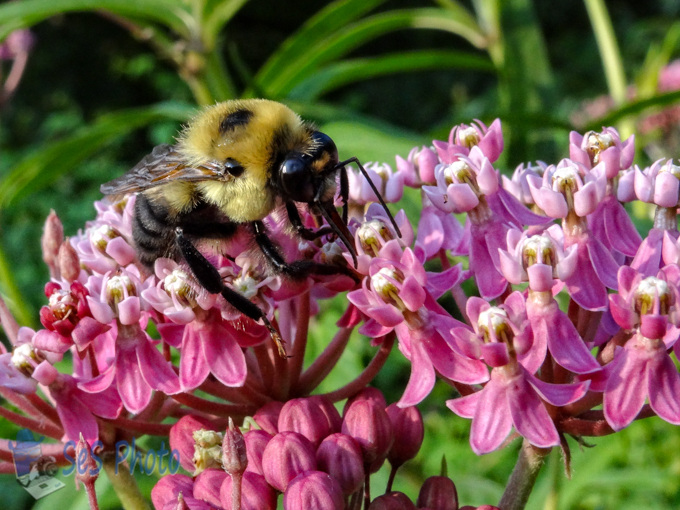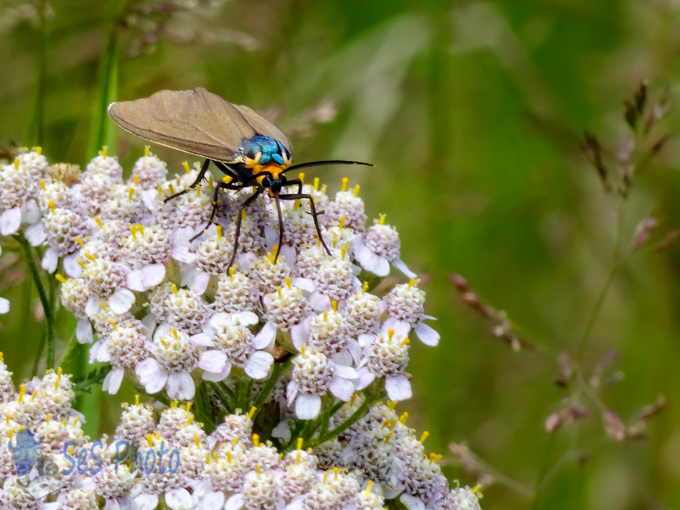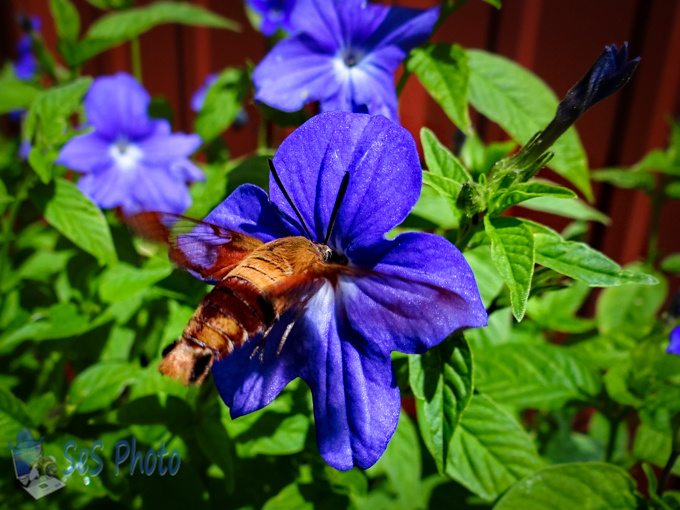While there are certain types of insects that I really don’t like, including mosquitoes, ticks and wasps, other types don’t ‘bug’ me as much, even if they destroy my garden. But I expect them to stay out of my house and I don’t want to find them on my kitchen table like this caterpillar. And while he might be cute with its furry and spiky look, he would be more appreciated outdoors (and could be a snack for the birds).
But he might not become a snack as his protection works well as this Banded Tussock Moth caterpillar often rests and feeds on the top surfaces of leaves during the daytime. The word “tussock” in its name refers to the clumps of hairs that is thicker or longer than the rest.
Banded Tussock Moth Caterpillar
